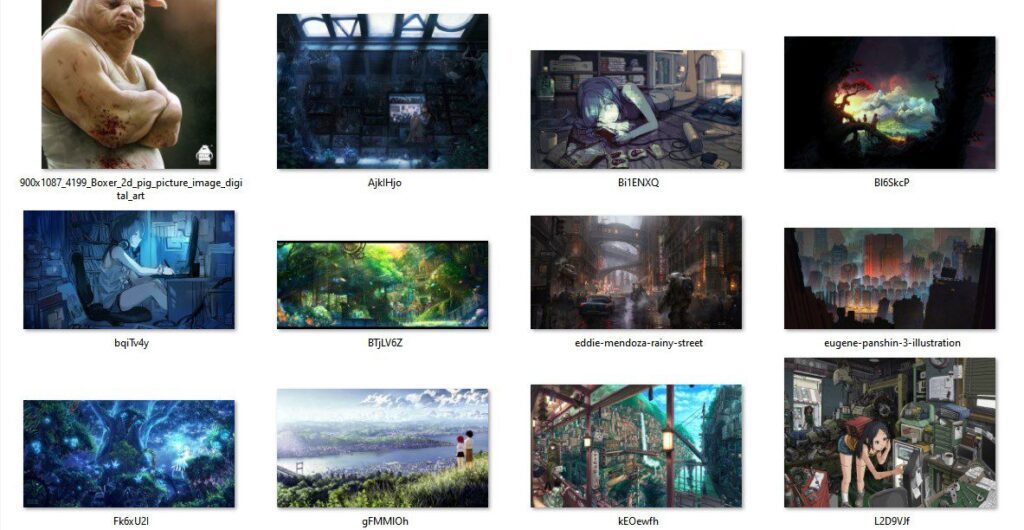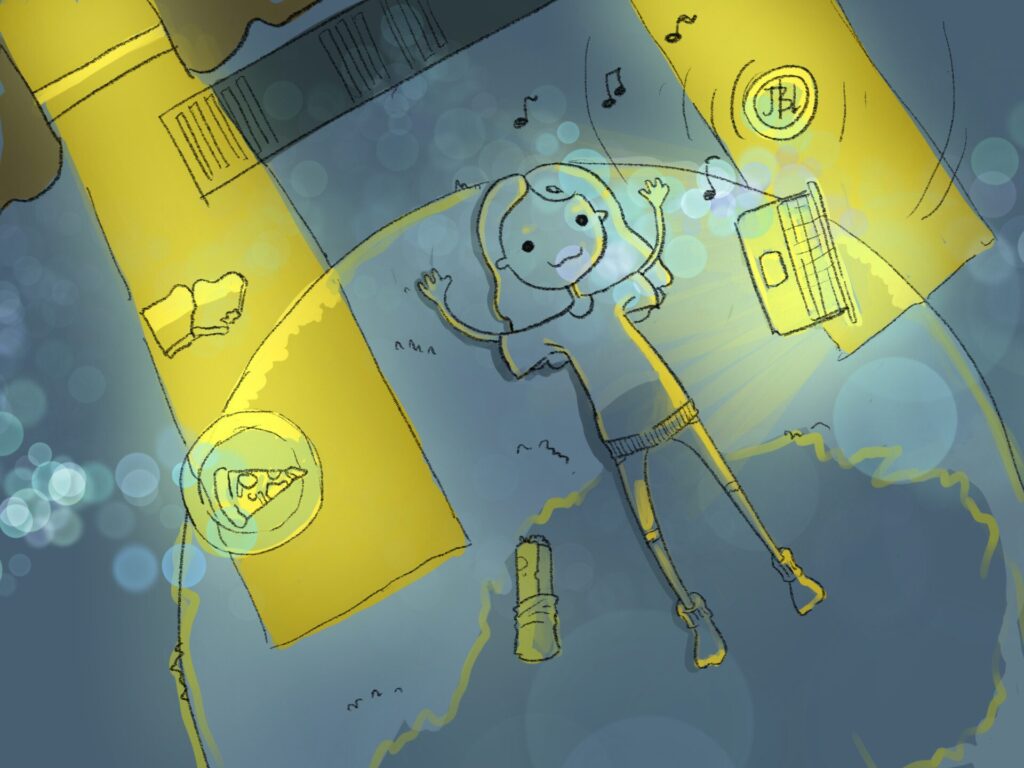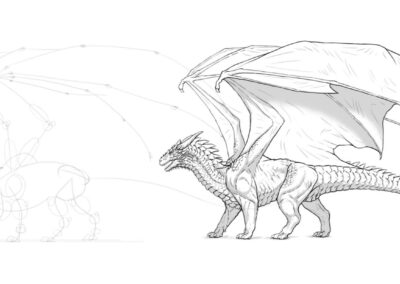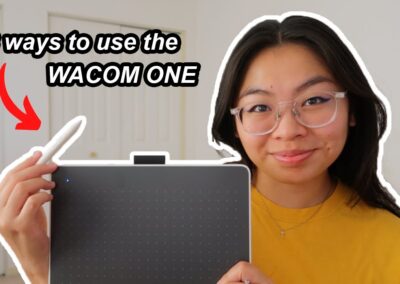Header by Damita Khalida Nurwan on Artstation
This is your passion. It’s all you want to do with your life, so much you’re shelling out thousands just to learn to do it better. Maybe you even see it as a labor of love: Your parents and friends are pessimistic about the job prospects, but you’re willing to take that risk just to make it happen: To go to school for art, work hard at it, and push yourself to be the best artist you can be.
…So why don’t you feel like doing it?
All creatives are familiar with burnout, but it can be uniquely frustrating for art students. Professionals often complain about the disillusionment they feel when they have to turn their passion into a job—and being a student carries all the responsibility with none of the pay. For those with heavy course loads, especially those who have to work other jobs while in school, it can be easy to just crash and start wondering why it’s all worth it.
So I set out to create a thorough list of things you can do to beat burnout. For this I collaborated with Madeleine Chaffin, an Animation and Visual Effects student at Azusa Pacific University, for some firsthand experience. Previously, she’s worked with us on an article called Making Up Lost Time During the COVID-19 Pandemic, where we featured her stunning freshman-year animated short “Bigger Fish.”
—
There are three basic types of creative burnout. Likely there are more, but I like dividing things into threes:
Type 1: Lack of ideas
This type is where the well runs dry. Where you want to create something original for your project, but still can’t come up with any concepts that aren’t ripoffs, anything with a message, anything that fits.
Grind, yes, but don’t dismiss the importance of inspiration
How important is it, exactly? On one end of the spectrum is the camp of working artists who believe it doesn’t matter, that art is just a matter of pure dedication to hours of practice and keeping a routine. On the other end is the stereotypical flighty artist who refuses to touch a pencil unless their inner child is dancing through a field of sunflowers.
Most of us are somewhere between the two: We recognize that a lot of art is tedious hours spent drawing details, but that if we get tired of it, we need outside motivation and ideas to rekindle our fire.
Looking at how other artists have executed similar ideas can not just inspire you, but give you a lot of clues to how to do it yourself. My go-to sources for top-tier art you can search by keyword are Artstation, hashtagged drawings on Instagram, and Reddit’s Imaginary Network. As Madeleine puts it:
Going through websites for creatives to see how they execute similar concepts can inspire you, while simultaneously introducing new techniques and styles you could be eager to try out. Immerse yourself in their mindsets!
Also, I can’t recommend keeping a general folder of your favorite pieces enough.
From my own folder titled “GOALS”
If you’re worried about jealousy, teach yourself a more positive line of thinking. Instead of seeing pro artists as untouchable creative gods, or even worse, competition for your future job, see them as humans with the same size brains as you, who once sucked at drawing until they grinded up their skills over the years—as you will someday. Or alternately, people you can borrow elements from without feeling the need to draw exactly how they do.
Plan with the snowflake method
Planning out your work before you start can save you a lot of the wasted time and pain that leads to burnout. The snowflake method is probably the way you do art anyway, working from generic and vague to specific. But it helps to methodize it, first brainstorming a ton of ideas, then whittling them down, consolidating them, until you find the ones you’re going to use for your project. This can mean making way more thumbnail sketches than you think you need, while keeping a notebook or Google Doc at hand with written descriptions of all of the things you want to try for this piece; what it needs to convey, steps you’ll need to implement it, and so on. Madeleine:
If you are on a schedule, plan out some time to just allow yourself to mull over your ideas in your head, and form them without the pressure of getting started creating immediately. Concepts you are satisfied with can take time to form, and rushing the process can be detrimental.
The more steps you can write down in a concrete form, the more you know what it’ll take to accomplish this project, the better. Just make sure your plan is flexible, focused more on goals than the tiny details of process, so you can change it later.
Juggle multiple projects
Madeleine:
Say, if you feel burnt out in the middle of working on a big painting, writing or music can be relaxing alternatives to turn to and regain some creative energy. I find it’s often easier to return to the original creative work later. It can also occasionally be helpful to return to something simple and comfortable within your creative subject! Working on something with the mindset that it is for fun, and not a necessity, can ease the mind greatly.
Personal projects are a useful reminder of why you wanted to improve your art in the first place. It can be validating beyond belief to see your passion project, the one you’ve dreamed of for years, become closer and closer to how you pictured it as you improve from your schoolwork.
But this takes balance to succeed. Depending on how many projects you take on, it’ll either allow you to constantly switch between projects to minimize gaps in your creative flow, or overwhelm you even more, making you always guilty when you have to neglect one project or the other for weeks. To avoid this, always be mindful of how many you’re taking on, the scope of them—having several projects going that will take years to finish is a bad idea—and make sure that at least one of them is fun.
Type 2: Mental exhaustion
Madeleine:
Creative burnout can also appear when you have creative ideas but no energy to properly execute them. Perhaps you just can’t quite imagine what you want your work to look or sound like. Or maybe, you have a perfectionist mindset and feel like you can’t quite achieve what you’re reaching for.
Figure out your focus style and work with it
Much of nailing your work is about entering flow state—that period of uninterrupted creativity where you might not even be able to explain how you did it after the fact.
How you get to this state is unique to every person, but generally, there are those who can get right into it, but burn out quicker, and those who have trouble starting upfront, but can keep going much longer. Let’s call them “sprint” and “marathon” focusers.
Sprinters can jump straight into a project with both feet, but after a while, they grow distracted and fatigued. For these people, things like Pomodoro timers, things that let them jump straight into work, then stop when they start to get tired, are helpful. For marathoners—my camp—flow state takes longer to achieve, but can last longer once you’re into it. Like getting a semi-truck up to speed on a highway, it takes a period of less focused work before it turns on, but once you’re there, you can keep going until bedtime. For both styles, a lot of people swear by apps that block distracting websites.
Finally, focus isn’t an inborn talent, but a skill. Like any other skill, it can be built up. If you’re not great at it, don’t fret: Just push yourself a little more each time. When you find yourself entering the realm of discomfort, but not quite pain (we’ll get to that) you’re growing. The more practice you get fighting off burnout, the better you’ll get at it.
Embrace shortcuts
In his “4 Time-Saving Tips from a Guy Who Spent 13 Years Doing a Comic,” artist Lars Martinson talks about how the insistence on doing everything by hand caused him to pour ten more years of his life than he’d originally anticipated into his graphic novel.
“When I first started, I wore my inefficient workflow as a badge of pride,” he says. “I equated hard work with artistic integrity … I saw shortcuts as basically cheating, something only used by work-for-hire hacks on a deadline. True artists, I told myself, toughed it out. I learned the hard way what that kind of stubbornness gets you.”
Remember, the end viewer won’t care about how much you suffered while making the piece. And school, where the consequences for failure are mediocre grades, not lost commissions or being fired, is the best place to learn to suffer less. You should be building a library of visual shorthands and digital shortcuts that will make rendering tricky subjects easier without compromising your vision.
One of the best aspects of Photoshop—or any art and design program, really—is that there’s never just one way to do anything. So start learning how to make and use actions, scripts, advanced shortcuts, and the countless other small hacks that will save you from having to draw every little detail by hand.
(The ExpressKey Remote is great for that, by the way.)
Don’t lose track of the social side of art
One of the main signs of burnout is “disengagement from friends and colleagues,” so get re-engaged with them.
You adopt the interests of the people you spend the most time around, and having other motivated artists around will do a lot to push you to draw more. Despite often being a solitary pursuit, sharing art is social, and let’s admit, most artists like to impress people and hear their direct feedback.
And when your focus wavers, I can’t overstate the importance of having someone to keep you accountable. Whether that means a designated accountability partner or just having someone around who will check in on you, the feeling of not wanting to disappoint a friend is sometimes a better motivator than even the grade.
Get over self-care guilt
Some people, both in and out of college, glorify swearing off TV and video games, hanging out with friends, parties, and general fun so you can buckle down and put everything into pursuing your dream 24/7. Unsurprisingly, this leads to burnout.
I won’t go into the details of self-care. There are thousands of books and articles on what self-care means and how to practice it, many aimed specifically at students: Here’s one. And another. And a third. And you probably already know what you like to do. But the biggest hurdle when it comes to actually doing it? Overcoming guilt. And I know: When you’re in the thick of your schoolwork, juggling classes and projects, especially when you’re already drowning in work, it can sound like putting the cart before the horse to just take some time off and be unproductive.
Looking through the self-improvement, psychology, and health sections at Barnes & Noble while researching this article, I found hundreds of books on how to work longer, harder, more focused… but nothing on burnout. There were plenty of books on de-stressing, sure, but nothing on overwork. Maybe I’m reading too much into it, but that seems to speak to the cultural notion that there’s no such thing as too much work. But this is a toxic mentality that will wear you down to a stump. The sooner you can get it out of your head, the better.
Type 3: Physical strain
“The spirit is willing, but the flesh is spongy and bruised.” — Zapp Brannigan
This is the most insidious kind of burnout: the kind that affects your body directly.
Where a lack of creativity can be frustrating, and mental exhaustion can wreck your grades and make you feel like crap, the physical kind can lead to repetitive strain injuries, carpal tunnel, tendonitis, and other physical ailments that might be setting you back more than the cost of your schooling in surgeries later down the line. And malnutrition and sleep deprivation can straight-up kill you, even if not immediately.
Thankfully, the ways to fight these are simple:
Sleep.
No matter how much it’s glorified in school and work culture, sleep deprivation is nothing to be proud of. Not only does it, in the blunt words of Jimmy Wales, “make you stupid,” if you plan on so much as driving, it can be fatal: The book U Thrive: How to Succeed in College (And Life) reports that 67% of undergrads who were in car accidents say they were tired at the time.
Sometimes, deadlines or having to balance jobs and school leaves you no choice but to pull all-nighters—and this is the best time in your life to do it, when you can tank the sleep loss without it killing you the next day. But if you’re managing your time well, this should be a once-in-a-blue-moon occurrence. And remember that sleep debt is cumulative: It’s easier to miss a day of sleep if you haven’t been running on five hours a night for the last few months.
If you can’t get a solid 6-8 hours of sleep a night on a schedule, [you can’t overestimate the value of] naps. In fact, sometimes, during crunch time, it’s even easier to sleep in two four-hour stretches a day instead of one eight-hour, when anxiety over your looming deadline is keeping you from sleeping too long.
And due to its cumulative nature, sleep debt can also be paid off with more rest. On your days off, sleep in and don’t feel bad about it.
Eat.
All other things being equal, working long hours on cup noodles will burn you out way faster than on a healthy diet.
I know, when you have a project you’re frantically trying to get in, the last thing you want to do is stop for an hour to root through your cabinets to find what you can combine into a meal, chop stuff, cook stuff—it always takes longer than on the recipe, doesn’t it?—then do the plates and dishes. But instead of letting that put you off it, one of the best things you can do through college and into early adulthood is develop a repertoire of one-pan meals that don’t take much shopping. If you’re an organized person and comfortable eating the same thing several days in a row, try meal prep. And it always helps to have a slow cooker so your food can be making itself while you work.
Side note: For pulling all-nighters specifically, U Thrive suggests “protein, complex carbs, and a ton of water.”
When something hurts, stop.
Common sense, right? That’s exactly the point: Don’t ignore the glaring signals right in front of your face. The “it’s nothing, I can still work” is strong among ambitious people, especially around college-age where you think you’re not old enough to do permanent damage to your body from working.
But in many cases, pain isn’t “weakness leaving the body,” it’s the body telling you something’s wrong, and if you push through it, you can seriously overexert and injure yourself. Think of it as your shield meter: If you keep taking hits after you deplete it, you’re directly burning through your HP.
See this post by Fisheye Placebo artist Wenqing Yanon on why that’s permanently bad. “[In college,] I drew all the time and didn’t think much about it,” she writes. “I would draw until I’m in pain, from sitting too long, from not eating because I was in the flow and didn’t want to stop. I would get terrible back pains and even heart palpitations from sitting in the same position drawing for so long.”
From Yanon’s Deviantart
“If it were just ugly nails, I wouldn’t really care, but the nails are just the tip of how bad I’ve been treating my body. Nowadays I try to take it easy and take long breaks in between but the damage that has already been done can’t be undone. I can only draw for so many hours in a day before I have to stop or I will get pains from my entire hand, arm, and shoulder.”
So listen to yourself and take care of your needs as best you can. Far from weakness, it’s ensuring that you’ll stay strong, able to keep up those marathon drawing sessions for the rest of your life. And although it’s often impractical to cater to its every whim, you have to do what you can.
Finally
Madeleine:
Creativity is a powerful tool of the mind, allowing people to pour themselves, their feelings, and their ideas into projects that can inspire others around them, and in turn, spur them to create something of their own. It exercises our brains and acts as an outlet. But just like any other muscle in our bodies, we have limits and cannot overwork them; we have to take care of our minds, and work at a pace that gives us time to regain energy, to make sure we can keep creating.
So think of burnout as overtraining. The key to pushing yourself without weakening yourself is learning to tell the pain that indicates growth from the type that’s breaking your body.
In short, work hard, absolutely; but plan so you can work smarter, don’t let go of your social life, keep some personal projects going so you don’t feel like art is strictly a job, and please, eat and sleep every day. And stay inspired.
—
Further reading
My other Wacom Community articles on the subject:
- How to Beat Anxiety and Get Started Drawing
- How to Take Care of Yourself When Working from Home
- Working from Home, Part II: Productivity
Books referenced:
- Dr. Mike Dow — The Brain Fog Fix
- Daniel Lerner & Alan Schlechter — U Thrive: How to Succeed in College (And Life)
—
About the Authors
CS Jones is a writer and illustrator based in the suburbs of Philly, but will be back in the city next month. He didn’t go to art school himself, but drew on a lot of his experience freelance writing and illustrating for the general burnout tips. You can see more of his work, including most of his contributions to this blog, at thecsjones.com, or follow him at @thecsjones on Instagram or Twitter.
 Madeleine Chaffin, as mentioned, is an Animation and Visual Effects student at Azusa Pacific University in (essentially) Los Angeles, class of 2023. She’s already graduated from the California State Summer School for the Arts, also for animation, has been named a California Art Scholar, and won two design contests for the city of Riverside.
Madeleine Chaffin, as mentioned, is an Animation and Visual Effects student at Azusa Pacific University in (essentially) Los Angeles, class of 2023. She’s already graduated from the California State Summer School for the Arts, also for animation, has been named a California Art Scholar, and won two design contests for the city of Riverside.










